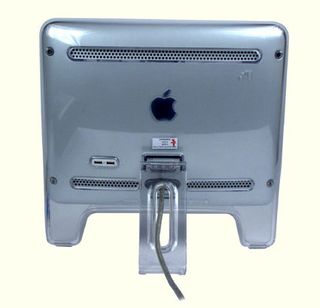Comparison of 15" LCD Monitors - Part II
Apple Studio 15" Display, Continued

There is one slight snag, however. When reading the previous table, the blue patterns appeared to display correctly. Yet the panel had a few gaps in some of the intermediate shades. The shades of blue in the 230 - 240 range were indistinguishable from each other.

The screen was then assessed on the basis of various games, including Quake III, and was found to match the specifications it claims. In fact, the specs given were just slightly slower than the actual times. The colors are bright and very luminous and the freeze-frames very attractive, but the most important factor, in this case the response time, is inadequate. The amount of trail left on the screen after a fast movement is quite noticeable. An even more serious fault is the fact that the screen sometimes displays the same object at various points simultaneously. We were not told what the screen response time was, but from our tests we estimate it to be around 50 ms.

From an ergonomic point of view, the screen has only two buttons for adjustment. The button on the right is for power and is directly linked to the on-off button for the computer. Hitting it once will put the screen on standby or bring the computer to life. The button on the left provides the only way to adjust the brightness. It is best left at the default setting, at around 80%, where it works just as well for games as for applications. The other standard settings (contrast, temperature, color) cannot be adjusted.
To summarize, this is a nice screen but the display panel is one generation out of date. A much faster response time would have been infinitely preferable. Mac users who want to play with their screens really ought to opt for a different LCD monitor... if the video output socket on their monitors lets them do so, of course.

Stay on the Cutting Edge
Join the experts who read Tom's Hardware for the inside track on enthusiast PC tech news — and have for over 25 years. We'll send breaking news and in-depth reviews of CPUs, GPUs, AI, maker hardware and more straight to your inbox.
Current page: Apple Studio 15" Display, Continued
Prev Page Apple Studio 15" Display Next Page Compaq TFT5030Most Popular

